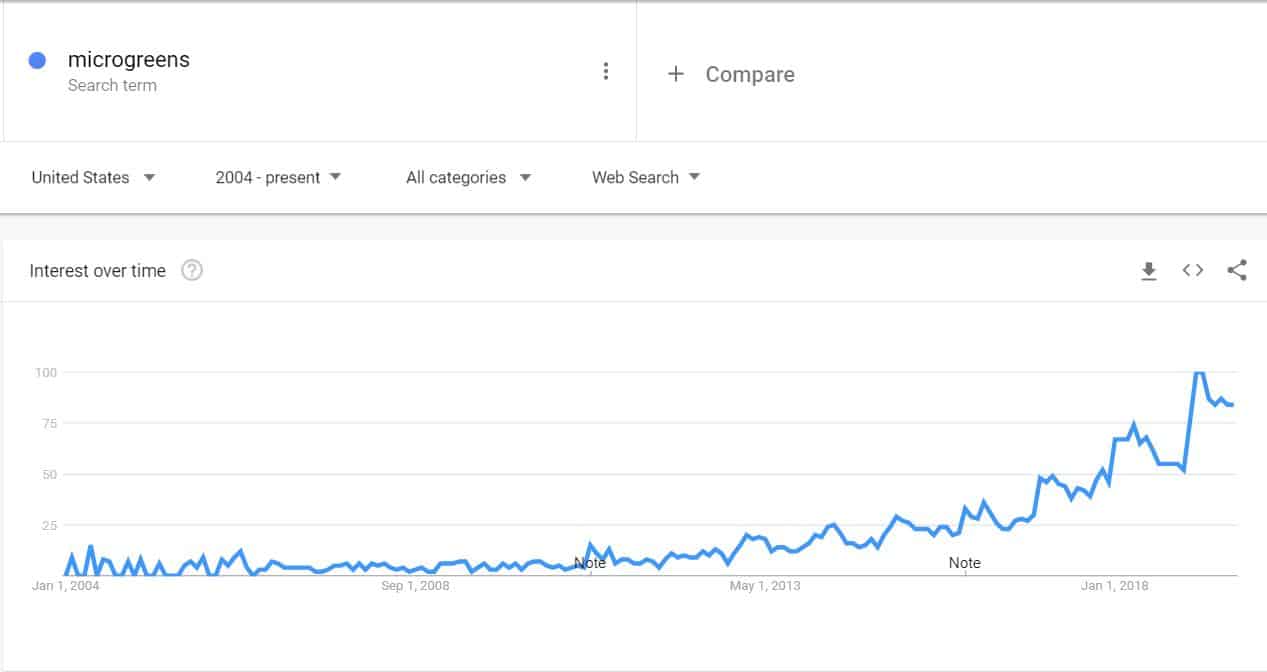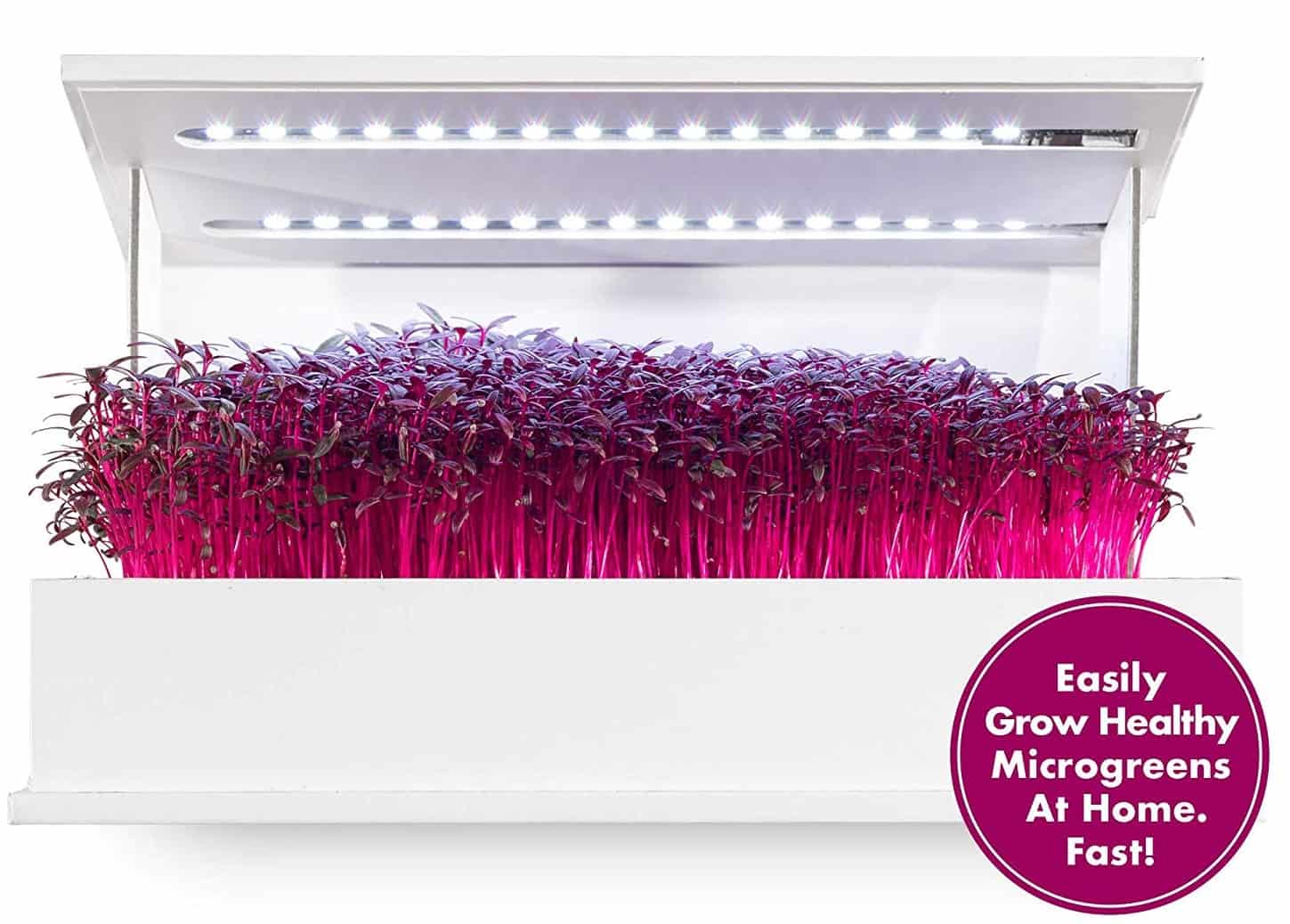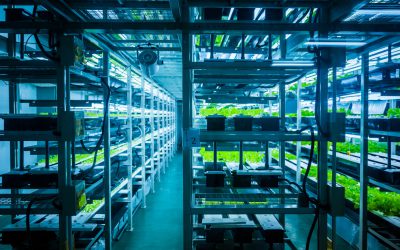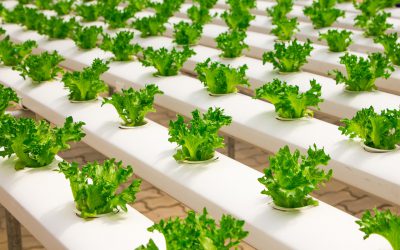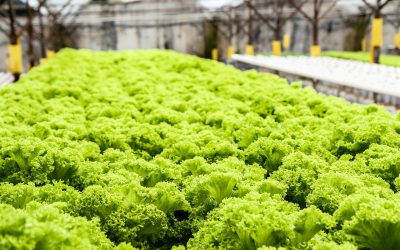Written by Jared Anderson
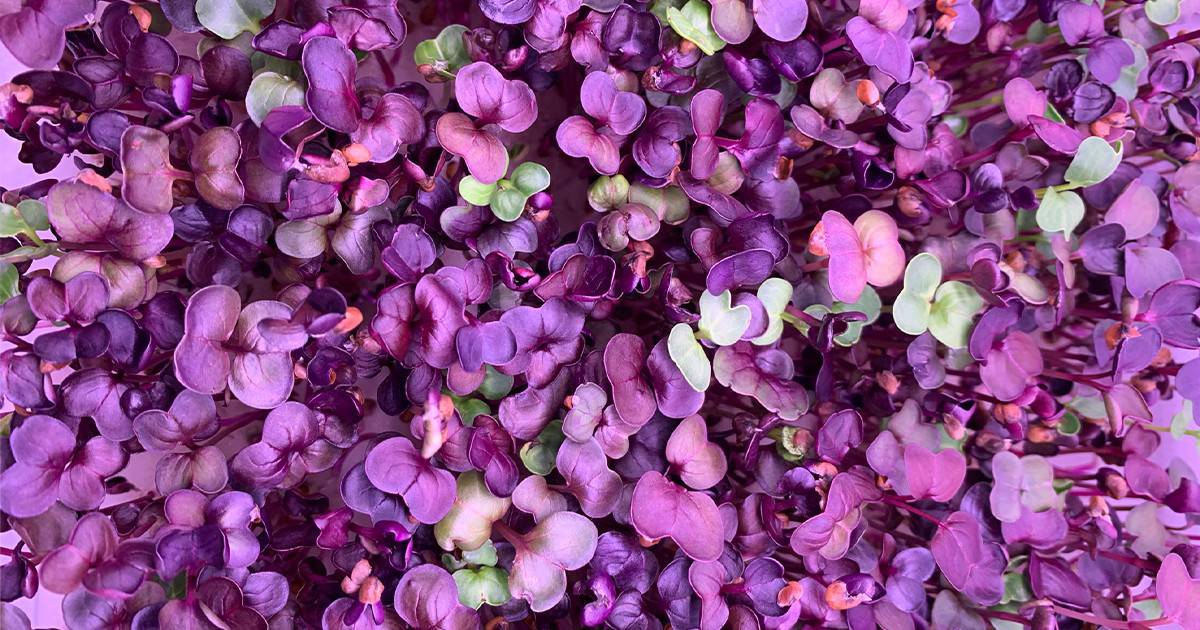
What Are Microgreens?
Microgreens are herbs or vegetables that are grown to the point where they’ve developed their cotyledon leaves. This is before their first adult or true leaves come in. On average, microgreens from the moment they start growing they take less than two weeks from planting to harvesting. Microgreens are primarily used as a garnish and have become very popular in the personal health community.
You may have eaten microgreens already and just didn’t know what you were getting. Microgreens have seen a huge boost in popularity within the last ten years, but have been showcased on top of our soups, salads and sandwiches since the 80’s. I first started growing micorgreens at home after watching a few videos on YouTube.
I immediately fell in love with them!
Some microgreens can take as little as 6 days from seed to harvest, with some taking up to a few weeks before they’re ready. Microgreens are harvested one time then the soil or grow mats can be composted.
Microgreens are herbs or vegetables that are grown to the point where they’ve developed their cotyledon leaves. This is before their first adult or true leaves come in. On average, microgreens take less than two weeks from planting to harvesting. Microgreens are primarily used as a garnish and have become very popular in the personal health community.
Table Of Contents
Where Did They Begin?
Microgreens reportedly first hit the U.S. markets in San Francisco, in the late 80’s. Since about 2012 the popularity of microgreens have begun to exponentially rise due to their significant health benefits. Microgreens can be easily grown at indoors at home with a small amount of space and supplies easily purchased online.
What Are The Health Benefits Of Microgreens?
Microgreens are known for the massive health benefits they provide. All microgreens have more vitamins and minerals than their adult counterparts. Red Cabbage microgreens have forty times more Vitamin C than adult Red Cabbage. Some microgreens contain high amounts of polyphenols. Polyphenols have been shown to help reduce free radicals in the body. This can help reduce the risk of heart disease and cancer.
What Is The Difference Between Sprouts and Microgreens?
In short, there are two key differences between microgreens and sprouts: how they’re grown and how they’re eaten. Microgreens are grown in soil or some type of grow mat, made of things like coconut coir, hemp, among other natural materials. Where with sprouts, they’re grown in water without any grow medium. Microgreens are harvested above the root and you consume the leaves and stem. With sprouts you’re eating the root, stem and seed. Due to this, sprouts have been found to have a higher risk of food-born illness.
What Are The Most Popular To Grow?
Since basically any herb or vegetable can be a microgreen, this is list is somewhat subjective. With that said, here’s a list of my 10 favorite microgreens that are relatively easy to grow and delicious:
-
Arugula
-
Broccoli
-
Daikon Radish
-
Kale
-
Kohlrabi
-
Pea Shoots
-
Red Amaranth
-
Red Cabbage
-
Red Rambo Radish
-
Sunflowers
Microgreens make for a great way to increase the health benefit and aesthetic appeal of any meal. With their short turnaround time, they make for a great way for new farmers to ‘cut their teeth’. Microgreens can be grown indoors and year-round. With relatively in-expensive equipment you can start growing microgreens at home.
How Can I Get Started At Home?
If you’re interested in getting started growing microgreens at home, it’s honestly never been easier. You can start with a 10×20 micorgreens tray and some growing mats, typically sold together. Or here’s a great starter kit available on Amazon:
Related Articles
The Complete Guide To Vertical Farming | What It Is and Why It’s So Important
With demands for fresh, locally sourced, non-GMO fruits, veggies, and herbs continuing to grow, the adoption of indoor vertical farms is increasing across the globe. Find out why, these farms are so important for the future of our food.
Nutrient Film Technique 101
The Nutrient Film Technique is one of many popular hydroponic growing techniques. In fact this method is deployed across both hobbyist gardens and large commercial grow operations.
A Deep Dive On Deep Water Culture Hydroponics Systems
What is Deep Water Culture or DWC hydroponics? Check out the benefits and how easy it is to get started growing using the DWC method.

